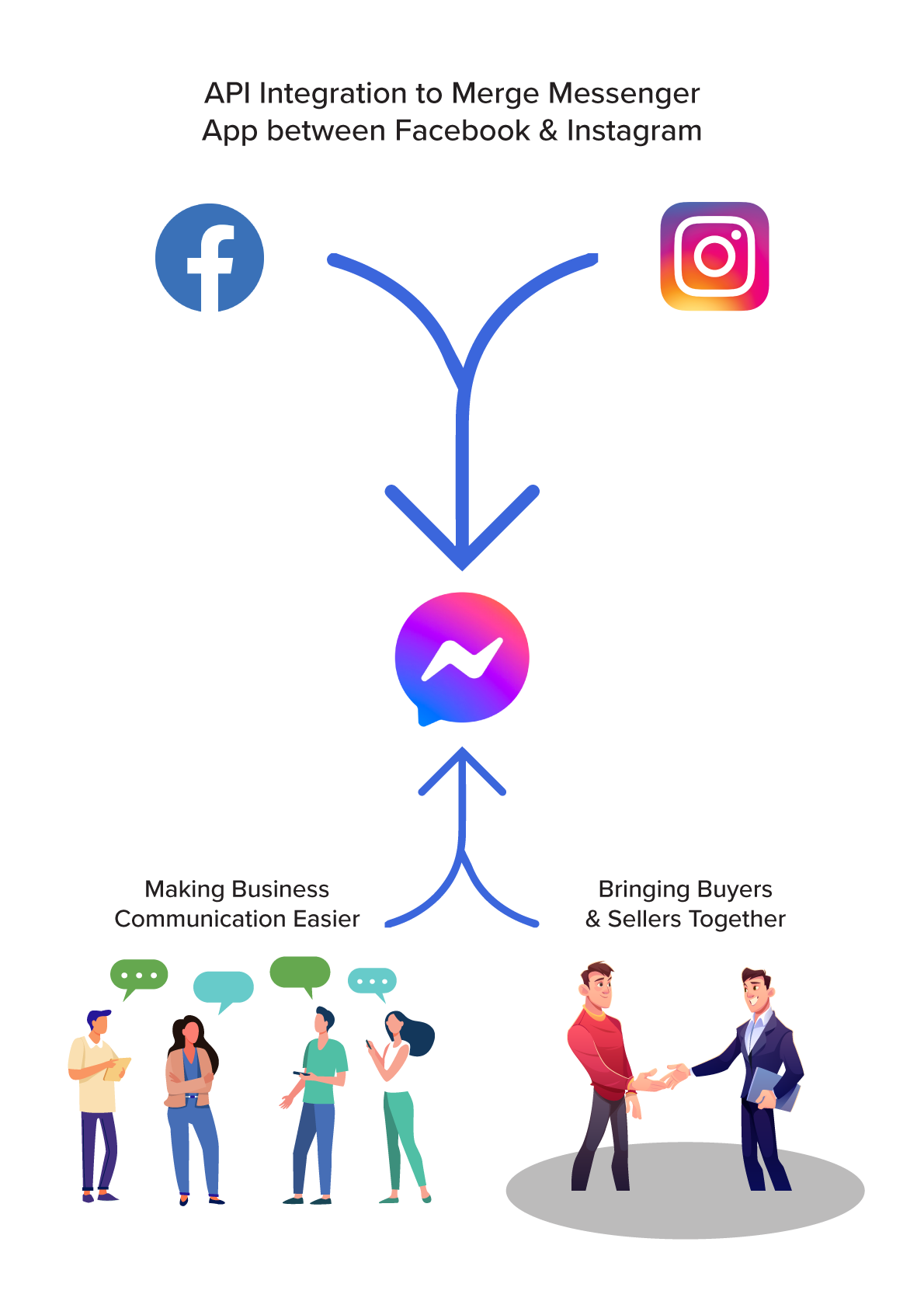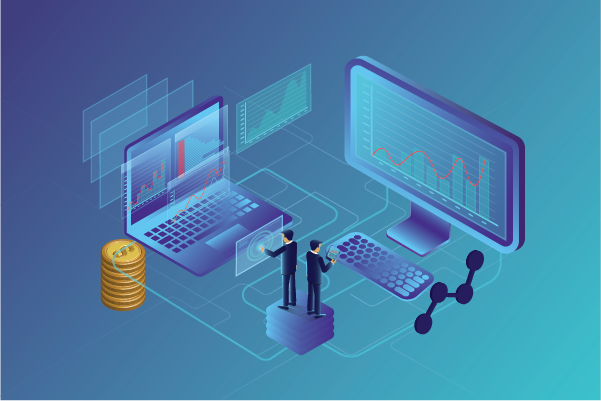Application programming interfaces (APIs) are the key instruments that optimize application communication and facilitate interoperability between two or more applications. APIs bring functionalities, such as maps to fitness-tracking apps, login authentication to banking apps, and customer service communications to e-commerce apps. Today, APIs are the binding agents that make most software applications communicate with each other seamlessly.
The benefits of an API infrastructure in modern software development are diverse, but most significantly, they accommodate the shift from legacy software to the cloud and bring microservices-based applications into the fold. APIs are definitely the most relevant technology accelerators that drive business innovation today.
This blog explores how APIs have become utilitarian assets and purveyors of transformation, not only in business outcomes but also as a pervasive digital methodology.
How APIs are Pushing the Envelope in Digital Transformation
Digital transformation relies on an organization’s ability to package its services, competencies, and assets into modular pieces of software that can be repeatedly leveraged. Every company in the world already has valuable data and functionality housed within its systems. However, capitalizing on this value means liberating it from silos and making it interoperable and reusable in different contexts, including combining it with valuable assets from partners and other third parties.
What APIs bring to the table is the opportunity to enable synergy transactions between brands. When developers are given ready access and a chance to combine digital assets in varied systems, they can interoperate in sandboxes and achieve innovative functionalities.
The scope of APIs becomes extremely powerful when the developer experience is kept in mind.
Brands in any industry can reap the benefits of APIs. Banking and healthcare are two industries, where API innovation has become imperative. In the case of telecom, industry interoperability with retail, media, and entertainment has deemed API usage a must-have component in their business strategy.
APIs can enhance their position by offering products and services more easily through innovative verticals. By unbundling and re-bundling their core competencies, and offloading non-core competencies to third-party providers, APIs help brands create new verticals.
API-led Innovation in the Real World
In recent times, brands have furthered innovation, using an API-first approach. This has especially led to the concept of ‘Super Apps’. Super apps are gaining popularity across the world because of the multiple functionalities and services that they house and offer. Most importantly, these functionalities are made possible by third-party open APIs, which are leveraged by branding, through forming partnerships with app providers.
Not only does this bring technological innovation to the fore, but also offers the consumer more in terms of services. Companies are finally optimizing their resources to get the most out of APIs with an eye on incremental services, which are above and beyond core services. In such cases, consumers get more from the brand and the brand itself is open to new revenue streams by exploring other tangents. Some examples are:
Netflix is the paragon of a company transitioning from a mail-order DVD provider to an online streaming media platform. The company’s API partner initiative has resulted in popular Netflix integrated applications for the web, mobile devices, and TV.
Beam Dental, a toothbrush manufacturer, extends its asymmetrical business model by offering dental insurance plans, based on data, such as brushing habits, brushing pressure, and brushing duration, gathered from their smart toothbrush.
APIs and Digital Transformation are Hand in Glove
Digital transformation hugely relies on an organization’s ability to leverage its applications by opening them to third-party interactions or collaborations. All businesses possess valuable data housed in their legacy systems. Extracting and interpolating data to further capitalize on its value and reusing it in different contexts is the true hallmark of a brand’s digital transformation.
A sophisticated API journey is a big ask to further a brand’s transformation in the digital arena. The right way forward is to provide developers easy access to the right technology, combine digital assets from different systems to leverage data and functionality for new apps, and adopt automation.
A classic example of this is when Facebook merged its Messenger app with Instagram through APIs. Such an integration was initiated to enable better business communication between Facebook/Instagram-based vendors and potential customers.

API-first Digital Transformation Trends in 2020-21
Google Cloud’s initiative to record findings, based on studies and surveys of hundreds of IT brands, revealed the most popular API practices in the last year. They are:
Increased SaaS and Hybrid Cloud-based API DeploymentsThe vast majority of respondents indicated that SaaS will be increasingly used to manage workloads, and the usage of hybrid clouds will also increase - two areas in which APIs could prove to be very useful. APIs are employed across a wide variety of applications, from complex analytics to secure messaging.
The Use of Analytics to Expand Competitive AdvantageWhen asked how APIs are now assessed at their companies, the most common responses were metrics focused on API performance, measurements focused on traditional IT-centric numbers, and metrics focused on API usage. However, business impact— including Net Promoter Score (NPS) and speed-to-market— comes out on top when it comes to API measurement.
AI/ML-Powered API Management is the FutureAPI management can be effectively bolstered by leveraging Artificial Intelligence (AI) and Machine Learning (ML), over other traditional methods such as authentication, imposing rate limits on a certain API call volume, and managing API access. API security and monitoring solutions powered by AI and ML-based technologies are in high demand to help companies detect and block malicious attacks. Usage among Apigee customers for anomaly detection, bot protection, and security analytics grew 230% last year alone.
API-First Ecosystems Drive InnovationAPI-first ecosystems can comprise entirely of internal parties (e.g., developers within an organization) or external organizations and personnel. APIs are at the heart of digital business ecosystems that include networks of partners, developers, and customers. Despite companies' concerns about speeding up the development of new applications and integrating internal applications, high-maturity organizations place a significant emphasis on cultivating a functional and optimal developer ecosystem.
API Security and Governance Are Highly SignificantFrom retail and manufacturing to financial services and hospitality, virtually every industry has changed the way they do business in 2020. COVID-19 has provided clear evidence of digital maturity. Employees, customers, and partners have all embraced digital operations with open arms. As a result, new possibilities for innovation have been created, but, at the same time, security vulnerabilities, such as hackers being able to access sensitive data, have been exposed.
APIs Are Here to Stay
The challenges of 2020 have carried over into 2021, but enterprises need to think further than just digital transformation in the coming decade. They need to strive for digital excellence in the future.
Adapting to the growing number of global digital ecosystems will require businesses to leverage advanced cloud capabilities in terms of security, global reach, access management, and artificial intelligence. Enterprises can use well-designed and managed APIs to ensure that their business can quickly adapt to disruptions and remain competitive.
The bottom line is that APIs are the ideal catalysts that drive powerful and profitable business outcomes by accomplishing digital transformation and innovation.
Our Services
Customer Experience Management
- Content Management
- Marketing Automation
- Mobile Application Development
- Drupal Support and Maintanence
Enterprise Modernization, Platforms & Cloud
- Modernization Strategy
- API Management & Developer Portals
- Hybrid Cloud & Cloud Native Platforms
- Site Reliability Engineering




